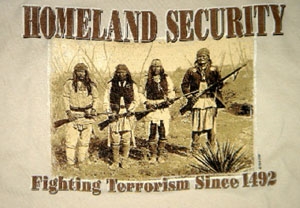Brief by Central Staff
Wildlife – December 2005 – Colorado Central Magazine
A couple of years ago, it seemed to us that Salida wasn’t as busy during hunting season as it used to be. But when we checked with the Division of Wildlife, we learned that hunter numbers were about the same as usual, and perhaps even up a little.
That’s not the case nationally, though, according to an article in the Nov. 5 Wall Street Journal (we know, that’s a Saturday — the Journal went to six days a week on Sept. 17).
The U.S. Fish and Wildlife Service said hunter numbers were down 7% from 1991 to 2001, the number of hunters aged 18 to 24 had dropped by more than a third in that interval, and the number of hunting licenses sold has stayed essentially the same from 2001 to 2004 even as the population grows.
Hunters are also frustrated, the Journal reported, by “the real-estate boom, which has city-dwellers and suburbanites buying weekend homes in rural areas, then posting ‘No Trespassing’ signs to keep out hunters. It also reflects stepped-up drilling on public land. In 1999, the U.S. Bureau of Land Management approved 1,803 permits for oil and gas drilling on its lands; last year, that number more than tripled, to 6,399.” From 1960 to 2001, hunters dropped from 21% to 6% of the population in the Mountain West.
The nation’s largest hunting lobby, the National Rifle Association, has been focusing on handguns, leading one critic to state that “our guns will never be taken away, but our wildlife and its habitat is.” The Sierra Club is courting hunters and going to sportsmen’s shows, pointing out that it works to save and expand game habitat.
As for residents’ attitudes about hunting, Colorado State University surveyed 12,673 people in 19 western states. The Nov. 12 Rocky Mountain News reported that 34.1% of Coloradans “believe wildlife exists for personal or economic uses, such as hunting or fishing,” while 34.9% said wildlife should be protected “as part of our extended family.”
Colorado is more protectionist than the West as a whole, where 40.1% go for use and 26.6 for protection. The highest use-wildlife percentage was in Alaska at 50.4%, followed closely by South Dakota at 49.9%. The highest companion-wildlife proportion was in Hawaii at 40.6%, followed by California and Washington.
As for the future, the Journal reports, hunting seems to be moving from a blue-collar sport to a high-end outing: “they’re driving $7,000 souped-up all-terrain vehicles with polypropylene gun protectors and camouflage seat covers, and carrying $1,600 Swar ovski binoculars.” And some hunting lodges are offering spa treatments and reflexology sessions.
What ever happened to a little whiskey served with a lot of tall tales near a warm campfire?


